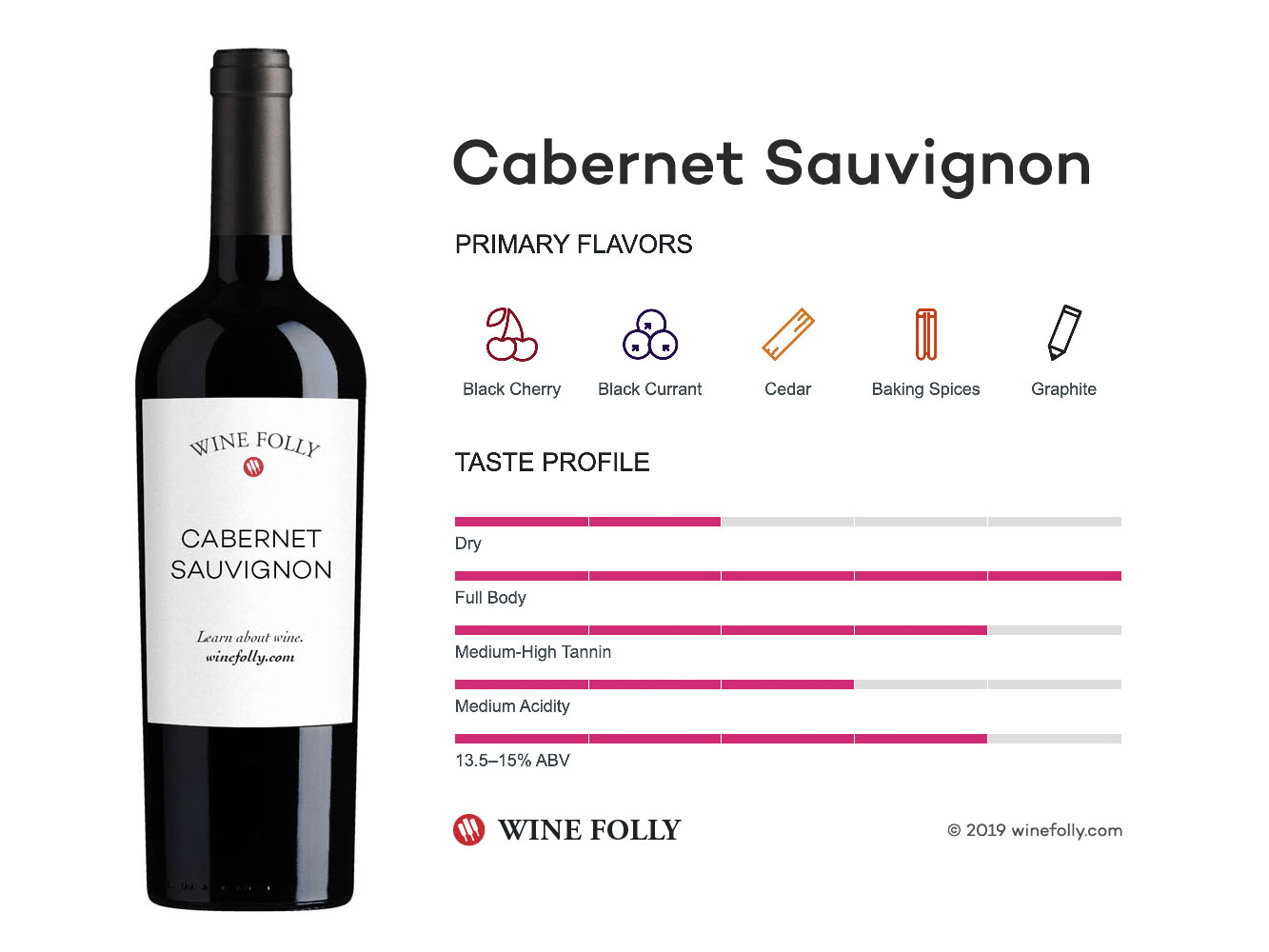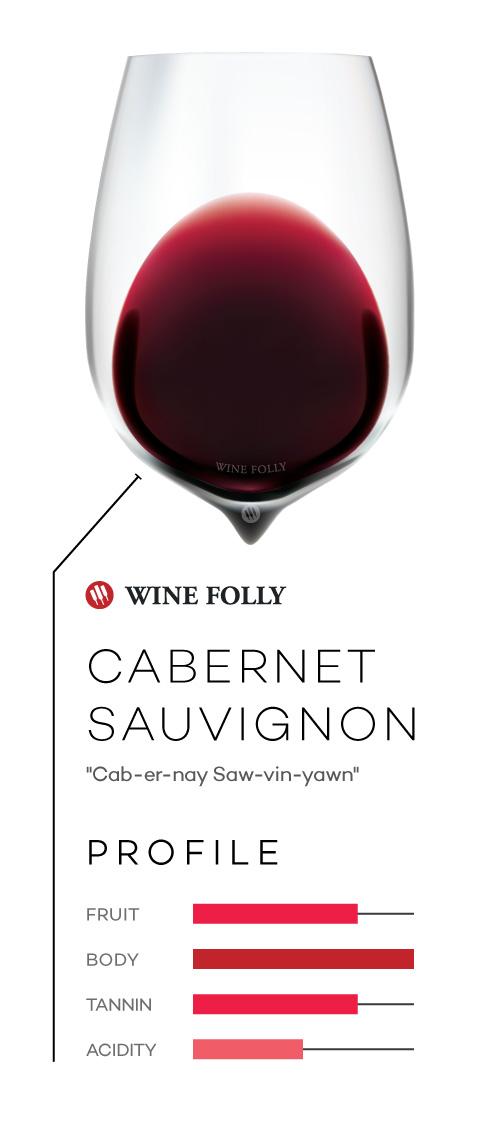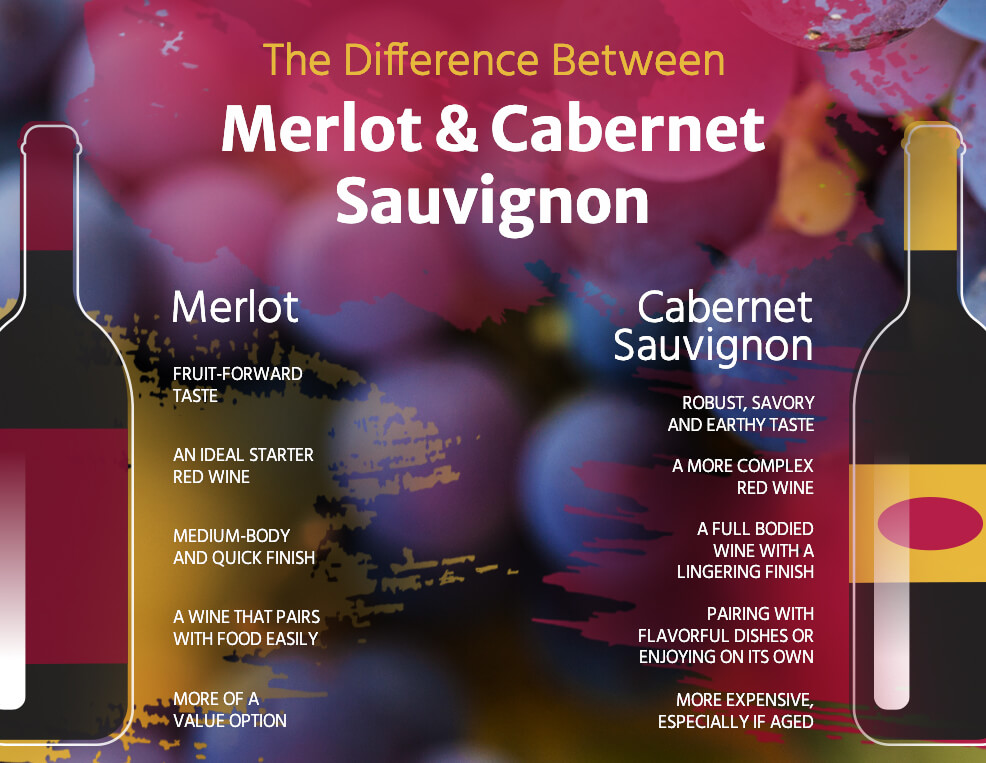Introduction

The introduction section of the blog provides an overview of the importance of understanding wine profiles, specifically focusing on the sweetness of Cabernet Sauvignon. It emphasizes the significance of knowing if Cabernet Sauvignon is sweet or not in order to enhance the wine-drinking experience and make informed choices when pairing it with food or enjoying it on its own. The section highlights that Cabernet Sauvignon is a popular red wine varietal, and understanding its sweetness level can help individuals select a style that aligns with their taste preferences.
Background On Wine Profiles And The Importance Of Understanding Them
Understanding wine profiles is essential for anyone who enjoys drinking wine. Each type of wine has a unique profile that encompasses its flavor, aroma, sweetness, acidity, and body. By understanding these characteristics, individuals can make more informed choices when selecting wines that align with their preferences. Whether it’s the level of sweetness in Cabernet Sauvignon or the crisp acidity in a Sauvignon Blanc, knowing the wine profile allows for a more enjoyable drinking experience. Additionally, understanding wine profiles helps in pairing wines with food, enhancing the flavors and overall dining experience.
Why Is It Important To Know If Cabernet Sauvignon Is Sweet Or Not?
When it comes to selecting a wine, knowing whether Cabernet Sauvignon is sweet or not is important for several reasons.
- Personal preference: Some people prefer sweeter wines, while others enjoy drier options. Knowing the sweetness level of Cabernet Sauvignon allows individuals to choose a wine that aligns with their taste preferences.
- Food pairing: The sweetness level of a wine can greatly affect how it pairs with different dishes. Sweeter Cabernet Sauvignon may complement desserts or bold-flavored foods, while drier varieties might be better suited for savory dishes.
- Overall enjoyment: Understanding the sweetness level of Cabernet Sauvignon can enhance the overall enjoyment and drinking experience. By selecting a wine that matches their desired sweetness profile, individuals can savor the flavors and aromas to their fullest.
In summary, knowing the sweetness level of Cabernet Sauvignon is vital for making informed choices, pairing with food, and enhancing the overall wine-drinking experience.
The Basics Of Wine Tasting

Wine tasting is a sensory experience that allows individuals to explore and appreciate the complexities of different wines. When tasting wine, it is important to consider the five basic tastes: sweet, sour, salty, bitter, and umami. These tastes can provide valuable information about the wine’s profile. Additionally, the sweetness scale is often used to determine the level of sweetness in a wine. By understanding these basic principles of wine tasting, individuals can evaluate wines more accurately and develop a better understanding of their own flavor preferences.
The Five Basic Tastes In Wine
When it comes to wine tasting, there are five basic tastes to consider: sweet, sour, salty, bitter, and umami. These tastes provide valuable information about the wine’s profile, allowing individuals to identify and appreciate its unique characteristics. The sweetness of a wine can range from bone-dry to lusciously sweet, while the sourness indicates the wine’s acidity level. The salty taste is less common in wines but can sometimes be detected. Bitterness is often associated with tannins, which can add structure and complexity to the wine. Lastly, umami refers to the savory and meaty flavors that some wines may possess. Understanding these basic tastes can help individuals evaluate wines more accurately and develop a better understanding of their own flavor preferences.
Using The Sweetness Scale To Evaluate Wines
When evaluating wines, the sweetness scale serves as a helpful tool. It allows individuals to determine the level of sweetness in a wine and make informed decisions based on their preferences. Wines can range from bone-dry (no sweetness) to lusciously sweet, and everything in between. The scale helps identify the balance of sweetness and acidity in a wine, providing valuable information about its profile. By understanding the sweetness scale, wine enthusiasts can choose wines that align with their taste preferences and enhance their overall wine tasting experience.
Understanding Cabernet Sauvignon

Cabernet Sauvignon is a renowned red wine grape known for its bold and complex flavors. It is characterized by its dark color, high tannins, and medium to full body. Cabernet Sauvignon wines often exhibit notes of blackcurrant, black cherry, cedar, and vanilla. They are known for their ageability and ability to develop rich and nuanced flavors over time. Cabernet Sauvignon is grown in many regions around the world, including Bordeaux in France and Napa Valley in California. Understanding the unique characteristics of Cabernet Sauvignon can help wine enthusiasts appreciate its distinctive flavor profiles and choose wines that align with their preferences.
Overview Of Cabernet Sauvignon Grape Characteristics
Cabernet Sauvignon grapes are known for their distinct characteristics that contribute to the bold and complex flavors of the wine. They have a thick, dark skin that provides intense color and high tannins. The grapes ripen slowly and require warm, sunny climates to reach their full potential. Cabernet Sauvignon wines often exhibit flavors of blackcurrant, black cherry, cedar, and vanilla, with a medium to full body. These grapes have a natural acidity that contributes to their aging potential and ability to develop rich and nuanced flavors over time.
Exploring The Different Flavor Profiles Of Cabernet Sauvignon
Cabernet Sauvignon offers a wide range of flavor profiles, making it a versatile and complex wine. Along with its characteristic blackcurrant and black cherry flavors, Cabernet Sauvignon can also exhibit notes of cedar, tobacco, green bell pepper, and mint. The aging process further enhances the wine’s complexity, adding hints of vanilla, leather, and earthiness. Additionally, the terroir plays a significant role in shaping the flavor profile of Cabernet Sauvignon, with wines from different regions showcasing unique characteristics, such as the herbaceousness in Bordeaux or the fruity intensity in California. Exploring these flavor profiles allows wine enthusiasts to appreciate the diversity that Cabernet Sauvignon has to offer.
Debunking The Myth: Is Cabernet Sauvignon Sweet?

Dispelling misconceptions about the sweetness of Cabernet Sauvignon is essential for understanding the true nature of this wine. Despite popular belief, Cabernet Sauvignon is generally not considered a sweet wine. It is classified as a dry wine, meaning it contains very minimal residual sugar. The perception of sweetness in Cabernet Sauvignon mainly comes from its ripe fruit flavors and rich, full-bodied character. The balance of acidity and tannins in the wine often masks any sweetness, giving it a more structured and robust taste. Therefore, if you prefer a sweeter wine, you may want to explore other varietals or look for specific sweet styles of Cabernet Sauvignon.
Dispelling Misconceptions About The Sweetness Of Cabernet Sauvignon
Many people mistakenly believe that Cabernet Sauvignon is a sweet wine, but this is simply not true. Cabernet Sauvignon is classified as a dry wine, meaning it has minimal residual sugar. The perception of sweetness in Cabernet Sauvignon often comes from its ripe fruit flavors and full-bodied character. It is important to understand that sweetness in wine is determined by residual sugar, and Cabernet Sauvignon typically has very little. So, next time you indulge in a glass of Cabernet Sauvignon, rest assured that you are savoring a dry and robust wine.
Examining The Factors That Contribute To Perceived Sweetness In Wine
When it comes to the perceived sweetness in wine, there are several factors at play. One of the main contributors is the fruit flavors and aromas present in the wine. Ripe and concentrated fruit flavors can give the impression of sweetness, even though there is minimal residual sugar. Additionally, the level of acidity in the wine can also affect the perception of sweetness. Wines with higher acidity tend to balance out the sweetness and create a more harmonious taste. Lastly, the alcohol level can influence the perception of sweetness, as higher alcohol content can provide a sense of richness and sweetness on the palate. Understanding these factors can help wine enthusiasts appreciate and evaluate the true nature of Cabernet Sauvignon and other wines.
The Role Of Tannins In Cabernet Sauvignon

Tannins play a significant role in Cabernet Sauvignon, contributing to its distinct taste and structure. Tannins are natural compounds found in grape skins, seeds, and stems, as well as in oak barrels used during aging. They provide a characteristic bitterness and astringency to the wine, creating a drying sensation on the palate. In Cabernet Sauvignon, the presence of tannins helps balance the perceived sweetness and adds complexity to the overall flavor profile. Additionally, tannins act as a natural preservative, helping the wine age gracefully over time. Understanding the role of tannins is crucial in appreciating the unique qualities of Cabernet Sauvignon.
Understanding The Impact Of Tannins On The Taste Of Cabernet Sauvignon
Tannins play a crucial role in shaping the taste of Cabernet Sauvignon. These natural compounds provide a distinct bitterness and astringency to the wine, creating a drying sensation on the palate. The intensity of tannins in Cabernet Sauvignon contributes to its bold and structured character. They also act as a natural preservative, allowing the wine to age gracefully over time. The presence of tannins helps balance the perceived sweetness in the wine and adds complexity to its overall flavor profile. They are an essential component in appreciating the unique qualities of Cabernet Sauvignon.
Balancing Sweetness And Bitterness In Wine
Balancing sweetness and bitterness in wine is essential for achieving a harmonious and enjoyable taste profile. In the case of Cabernet Sauvignon, the natural tannins present in the wine play a crucial role in balancing these two elements. Tannins provide a bitterness and astringency that can counterbalance the perceived sweetness in the wine, creating a well-rounded and complex flavor. The level of tannins in Cabernet Sauvignon can vary depending on factors like grape ripeness and winemaking techniques. Winemakers carefully manage the tannin extraction during the winemaking process to ensure a harmonious balance between sweetness and bitterness in the final product.
Conclusion

In conclusion, understanding the sweetness levels of Cabernet Sauvignon is crucial for wine enthusiasts and connoisseurs alike. While Cabernet Sauvignon is not typically considered a sweet wine, its rich and full-bodied taste profile offers a wide range of flavors to explore. By debunking the myth of Cabernet Sauvignon’s sweetness and recognizing the impact of tannins on its taste, wine lovers can better appreciate the complexity and balance of this popular varietal. So next time you uncork a bottle of Cabernet Sauvignon, savor the dark fruits, tobacco, cedar, and dark chocolate notes, knowing that its profile is a perfect harmony of sweetness and bitterness.
Summarizing The Key Takeaways
In conclusion, understanding the sweetness levels of Cabernet Sauvignon is crucial for wine enthusiasts and connoisseurs alike. While Cabernet Sauvignon is not typically considered a sweet wine, its rich and full-bodied taste profile offers a wide range of flavors to explore. By debunking the myth of Cabernet Sauvignon’s sweetness and recognizing the impact of tannins on its taste, wine lovers can better appreciate the complexity and balance of this popular varietal. So next time you uncork a bottle of Cabernet Sauvignon, savor the dark fruits, tobacco, cedar, and dark chocolate notes, knowing that its profile is a perfect harmony of sweetness and bitterness.
Tips For Choosing Cabernet Sauvignon Based On Your Flavor Preferences
When choosing a Cabernet Sauvignon, it’s important to consider your flavor preferences. Here are some tips to help you make the right choice:
- For those who prefer a sweeter wine, look for Cabernet Sauvignon from warmer climates, as they tend to have riper grapes and higher sugar levels.
- If you enjoy bold and dry wines, opt for Cabernet Sauvignon from cooler regions, as they often have more pronounced tannins and acidity.
- Consider the aging process. Younger Cabernet Sauvignon wines are fruitier and more vibrant, while aged ones develop more complexity and earthy flavors.
- Experiment with different vintages and winemakers. Each one brings its own unique style and flavor profile.
- Read wine reviews and consult with knowledgeable sommeliers for recommendations based on your specific preferences.
Remember, the best Cabernet Sauvignon is the one that suits your palate and brings you joy with every sip.
Frequently Asked Questions about Cabernet Sauvignon and its Sweetness
Q: Is Cabernet Sauvignon sweet?
A: No, Cabernet Sauvignon is not typically considered a sweet wine. It is known for its dryness and rich flavor profile.
Q: What does it mean for a wine to be “dry”?
A: In the context of wine, the term “dry” refers to the absence of residual sugar. Dry wines have little to no sweetness and are often characterized by their crisp and refreshing taste.
Q: Is there any variation in sweetness among different bottles of Cabernet Sauvignon?
A: While the traditional style of Cabernet Sauvignon is dry, winemakers can produce variations with varying levels of sweetness. However, these sweet styles are not as common and are typically labeled differently, such as “Cabernet Sauvignon dessert wine” or “late harvest Cabernet Sauvignon.”
Q: What are the typical flavor profiles of Cabernet Sauvignon?
A: Cabernet Sauvignon is renowned for its full-bodied nature, rich tannins, and bold flavors. It often displays notes of dark fruits like blackberry, black cherry, and cassis, along with hints of herbs, cedar, and sometimes even tobacco.
Q: Are there any exceptions to the rule that Cabernet Sauvignon is not sweet?
A: While exceptions do exist, they are not the norm. Some producers might experiment with blending in sweeter grape varietals or using winemaking techniques that retain more residual sugar. These exceptions are often noted on the label or described by the winery.
Q: What are some suitable food pairings with Cabernet Sauvignon?
A: Due to its robust flavor and structure, Cabernet Sauvignon pairs well with a variety of foods. It complements red meats, especially steak and lamb, as well as firm cheeses, charcuterie, and rich dishes like stews or braised meats. Its tannins can also help to cut through fatty foods.
Q: Is there a specific temperature recommended to serve Cabernet Sauvignon?
A: Cabernet Sauvignon is typically best served between 60-65 degrees Fahrenheit (15-18 degrees Celsius). This temperature range allows the wine to showcase its flavors and aromas without being excessively warm or cool.
Q: Can Cabernet Sauvignon age well?
A: Yes, Cabernet Sauvignon is often considered a wine that improves with age. Its tannin structure provides the potential for long-term aging, allowing the wine to develop more complex flavors and smoother textures over time.
**NOTE: While Cabernet Sauvignon is generally considered a dry wine, always check the specific bottle or consult with a sommelier for accurate information on its sweetness, as production methods and wine styles can vary.

Frog Bear & Wild Boar is a vibrant and dynamic establishment located at 343 N Front St. in the heart of the Arena District in Columbus, OH. Our story began with a passion for creating an inviting and lively environment where friends, families, and colleagues can come together to enjoy great food, refreshing drinks, and fantastic entertainment. Founded on the principles of warm hospitality, delicious cuisine, and a commitment to community, Frog Bear & Wild Boar has become a beloved gathering place for locals and visitors alike. Our dedication to delivering exceptional experiences has earned us a reputation for being a go-to destination for memorable outings and special occasions.